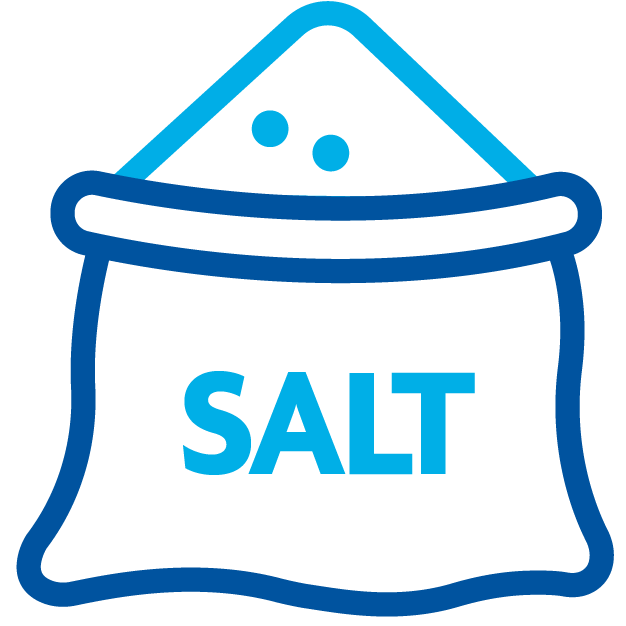
Pre-Season Checklist: Pool Salt System Maintenance
Getting ready for pool season? There’s nothing quite like diving into crystal-clear water on a hot day, but before you start planning your next pool party, there’s some essential maintenance to take care of. Especially for those with a saltwater pool, pre-season salt system maintenance is key to ensuring your system operates efficiently while extending its lifespan.
Whether you’re a DIY enthusiast or a homeowner passionate about keeping your pool at its best, this step-by-step salt system maintenance guide will walk you through how to prepare your salt system for the summer and maintain your pool with confidence.

Water Chemistry Basics
Balanced water is the foundation of a healthy pool and a properly functioning salt system. Without the right levels of chemicals, your pool can become a breeding ground for bacteria, algae, or even corrosion. Here's what you should focus on:
pH Levels
- Why it matters: pH levels affect water clarity and equipment longevity. High pH (above 7.6) can lead to scaling, cloudiness, and irritation.
- What to do: Test your pH weekly, aiming for a range of 7.4–7.6. Use a pH decreaser if necessary to keep everything in check.
Total Alkalinity (TA)
- Why it matters: TA acts as a buffer to help stabilize pH levels. If it’s unbalanced, you’ll face constant shifts in pH levels.
- What to do: Test TA monthly, aiming for a range of 80–120 parts per million (ppm). Adjust the levels using balancing chemicals as needed.
Calcium Hardness
- Why it matters: Salt cells are sensitive to scale buildup, and proper calcium levels protect both your equipment and pool surfaces.
- What to do: Test monthly to maintain levels between 200–400 ppm. If calcium levels are too high, partially drain and refill your pool water.
Salt Levels
- Why it matters: Without the right salt concentration, your salt system can’t generate chlorine effectively.
- What to do: Test salt levels monthly, keeping them within 2,500–3,500 ppm, or follow your manufacturer’s recommendations.
Free Available Chlorine
- Why it matters: Even saltwater pools need proper chlorine levels to kill bacteria and maintain sanitization.
- What to do: Test weekly to ensure chlorine levels stay between 2.0–4.0 ppm. If levels dip too low, adjust your salt system output or add pool shock to bring them up quickly.
By staying on top of these levels, you’ll create the perfect environment for your pool and its salt system to thrive.
Salt Cell Maintenance Checklist
The salt cell works as the heart of your saltwater system, converting salt into chlorine to sanitize your pool. To keep your equipment operating efficiently and extend its lifespan, follow this simple salt system maintenance checklist regularly:



1. Inspect for Scale Buildup
Check the salt cell for any signs of calcium or scale buildup. Excess scaling can reduce the cell’s effectiveness.
2. Clean the Salt Cell
If buildup is present, clean the cell using a mild acid solution or a salt cell cleaner recommended by the manufacturer. Always follow safety guidelines when handling cleaning solutions. Follow the steps in this article to expertly and easily clean your salt cell!
3. Check Electrical Connections
Ensure all electrical connections are secure and free of corrosion for proper functionality.
4. Monitor Salt Levels
Verify that salt levels in the pool are within the manufacturer’s recommended range—typically between 2,500–3,500 ppm. Adjust levels as needed.
5. Examine the Control Panel
Review the control panel for error codes or alerts that may indicate the need for maintenance.
6. Rinse Regularly
Rinse the salt cell with fresh water periodically to remove debris and maintain consistent performance.
By following this checklist, you’ll keep your salt cell in peak condition, ensuring your pool stays clean and inviting all season long.
When to Clean the Salt Cell
Knowing when to clean is just as important as knowing how. If you notice decreased chlorine output or visible scaling, it’s time to get to work.
How to Clean Your Salt Cell
- Gather your supplies: Gloves, goggles, a hose, and muriatic acid or an acid cleaner like Acid Magic.
- Shut off power: Turn off your salt system and disconnect the salt cell.
- Hose it down: Spray the cell plates to remove dirt and loose debris.
- Prepare a cleaning solution: Mix one part acid with four parts water in a plastic bucket or salt cell stand.
- Submerge the cell: Place the cell into the cleaning solution for 2–15 minutes, as recommended by your salt system manufacturer. Never exceed the recommended soaking time.
- Rinse and reinstall: Rinse thoroughly with fresh water, reconnect the cell, and power everything back on.
Regular cleaning and inspections will not only prevent costly repairs but also keep your pool water sparkling clean.
Swim Easy This Season
Preparing your salt system and pool for the season ahead ensures you’ll enjoy a hassle-free summer of swimming and relaxation. From balancing water chemistry to performing regular salt cell inspections, these preventive measures protect your pool investment while elevating your experience. Stop by your local Leslie's to take advantage of our free services, including free AccuBlue® water testing and free in-store labor on repairs. Or, if you need to schedule a visit from one of our pool pros, visit the Leslie's service page to schedule a Leslie's professional for your pool or spa.